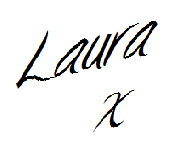Did you get the lyric reference? I really hope so. If you did, I like you, you are my type of people.
In a once-in-a-blue-moon serendipitous alignment of my reading progress and actual worldly events, I finished my most recent NetGalley request on the 30th of March – Vincent van Gogh’s birthday.
If you weren’t already aware – and why would you, this is a pokey little blog on an empty corner of the internet – I am something of a Vincent fan. In fact I’ve made an entire video all about the books, films, and tear jerking Doctor Who episode I think everyone should look up if they’re interested in that dear Dutchman.
I make no apologies for my enthusiasm or amateurishness.
So, you can imagine my dorky little delight when I found out a few days prior a new exhibition opened at the Tate Britain Van Gogh and Britain.
The exhibition brings together the largest collection of Van Gogh paintings to the UK for nearly a decade, including some of his most famous works like Starry Night on the Rhône and, on loan from the National Gallery, Sunflowers.
It’s on until August the 11th, all the prices and times are listed in the link above. I am already forwarding it to friends and family in the hopes I can convinced them to trade a peaceful evening for a walk around a gallery while I chew their ear off about Van Gogh.
Now, speaking of sunflowers…
 The Sunflowers Are Mine: The Story of Van Gogh’s Masterpiece by Martin Bailey
The Sunflowers Are Mine: The Story of Van Gogh’s Masterpiece by Martin Bailey
My rating: 4 of 5 stars
The Sunflowers Are Mine: The Story of Van Gogh’s Masterpiece by Martin Bailey, a re-edition of the 2013 book of the same name, takes Vincent van Gogh’s iconic flower and examines, the hows, whos, and wheres of those famous paintings.
The book is comprised of essentially two halves. The first examines how Van Gogh came to choose the sunflower, his influences, Van Gogh’s situation when he painted each of the seven canvases. The second half follows the story of each painting once they left the easel, both their own adventures through galleries and wars, and as a wider look at their influence on modern art.
As I would expect from someone who has written several books on Van Gogh, Bailey’s investigation of the sunflower still-lifes is thorough, enlightening, and clearly painstakingly researched. I did find the tail-end of the second half a little dry, the story behind a painting petered out to a perfunctory description but I can’t hold that against the author; only so much can be written about a painting that has sat peacefully in a gallery or on someone’s wall for years. Otherwise the text is very readable, whether you have a casual interest in Van Gogh or are an art history student. I have read quite a bit about Van Gogh already and even I found myself learning something new. For example, I was not aware of the painting Five Sunflowers existed, let alone had been destroyed in Japan in 1945 during an air raid. Fortunately it was photographed in colour in 1921, and is featured in this book, in all the jewel-like intensity emblematic of Van Gogh, making it the first time it has been reproduced outside of Japan.
The reproduced pictures are almost worth buying the book alone. Vincent’s paintings are printed in marvellous, glossy and vivid detail. Even though they are digital reproductions you really get to share the sense of all those 1880s gallery goers shocked out of a pastel stupor. With pictures to reference to a reader can clearly see where Van Gogh influenced others, or where he found inspiration, as well as a visual context to contemporary art movement. There are also brilliant, fascinating photographs where possible. There was one in particular that stood out; a photograph of the artist’s nephew, Vincent Willem ‘the Engineer’ van Gogh, from 1973 at the Van Gogh museum in Amsterdam. An elderly man in a black and white photograph but it immediately reminded me Toulouse-Lautrec’s 1887 Portrait of Vincent van Gogh. It completely struck me, seeing an actual person – not a painting – that was only one generational step away from such a key figure in modern art.
Martin Bailey has written a wonderful exploration of Vincent van Gogh and some of the most famous sunflowers in history. An informative read and utterly beautiful, I think it would be suitable either as an introduction to Vincent’s life or as part of a deeper study, and highly recommend The Sunflowers Are Mine.
Maybe pick it up from the Tate Britain gift shop on your way out of the exhibit

~
I received my copy through NetGalley in exchange for a review, all opinions my own etc etc
Like my reviews? You can read all of them, and more, over at my blog!
If you enjoy my writing, want to see more, or enjoy being randomly generous, you can leave a tip in my ko-fi jar.
Yes, yes I am including a gratuitous Doctor Who gif

















